Table of Contents
Are you planning to build a career in SEO writing? Or do you want your or your company’s blog article to rank as one of the top results in search engines to bring more relevant organic traffic? Getting started in the world of search engine optimization can be daunting, so it’s natural to have a lot of questions.
We are here to help you walk through the big sea of SEO writing. We have also included an SEO checklist later in the article that you can use as a starting point to ensure that you are optimized for search engines before publishing content.
Here’s a complete beginner’s guide to help you get started in SEO writing. However, there is quite a lot of SEO misinformation floating around and it’s important to clear those up. Firstly, let’s debunk some myths.
Top Myths in SEO writing
There are a lot of myths in SEO writing. Let’s break them down. Here are the popular myths about SEO writing.
- Maximum keyword means maximum results
No doubt using keywords in your articles helps you rank in Google’s SERP, but keyword stuffing only helps in losing the quality of your content. SEO is a prime factor to focus on when writing articles for the web, but your content should come top in priority. You shouldn’t compromise the quality of your content for anything.
- Content is not that important if you have good SEO skills
You can use your SEO skills in increasing your rank, but the content is the core element that helps you rank in SERP. Good results with poor content aren’t even possible in dreams. SEO is not in someone’s hand. No matter how good your SEO Analyst is, if you have poor content in your blogs, it won’t bring any results.
- SEO is a one-time thing
This is one of the popular myths heard about SEO. Search engine optimization is an evolving process, it is based on certain algorithms so you must keep updating your articles and links. If you are writing about something be sure that it’s future proof, if not update it regularly add new keywords, edit/modify the links, etc. This helps you achieve the best results in the long term.
- The longer the article, the better the results
The length of the content does matter, but there’s no golden rule about it. We can’t say whether longer articles are better or shorter. It depends entirely on the topic. Sometimes your topic needs to be addressed elaborately, so you write in detail or else write shortly. Simply focus on the topic and write accordingly.
- Social Media helps in SEO
Social media can cause a great effect on brand promotion and awareness campaigns, but does that affect your SEO ranking? Not really. Social media can be used to share your website links and blog articles and thereby generate some visitors to your website. But it doesn’t directly impact your SEO. Search engine optimization is all about keyword searching, SERP results, and content.
There are even more such myths about SEO writing. You need to let go of these myths to be able to create good quality content for your website.
Elements in SEO writing
These are the five elements to focus on when writing articles for the web.
- Search intent
- Research
- Content
- Images
- SEO
1. Understand the search intent
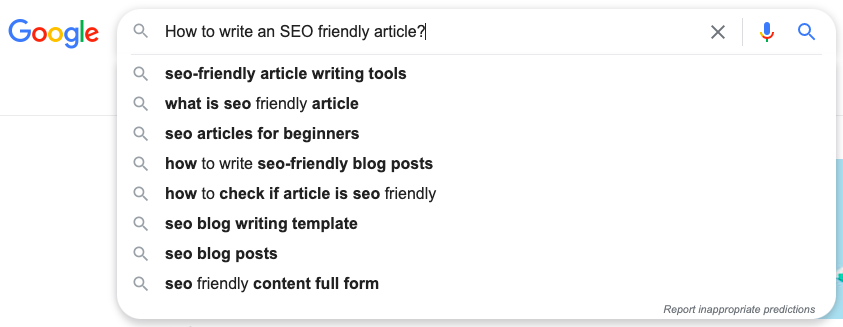
This is the first step to consider before writing about something. You should be aware of the search intent of your readers. What are the possible queries they might be looking for? You should ask yourself. Let’s say you want to write about the beautiful places in New York. The first thing you should do is ask yourself what are the related queries? Who will be the readers? What are they looking for? In this way, you can have a better understanding of the search intent. Another way to understand search intent is to look at the search results themselves. Look at the results and see what kinds of results are getting ranked in Google. You can optimize your content accordingly.
Importance of understanding search intent
Now let’s see what are the importance of understanding search intent when writing an SEO-friendly article.
Google likes it
Satisfying the search intent is the primary goal of Google. If Google finds your article satisfying the most for the search intent of users, It’ll rank your article on top in SERP.
Widen your reach
Focus on multiple search intents and write to fulfill those search intents. Optimum reach depends on the specificity of your content to various search intents. Satisfying various search intents will help you widen your reach.
Improve your rankings
Search intent is the primary factor that determines the ranking of your webpage. If you have a better understanding of search intent, it will help in improving your rankings. It helps in establishing keywords relevant to your article. In this way, you can add relevant keywords to your article which will improve your rankings in the search engine index. Check out this article on different types of search intents to gain a deeper understanding of search intents.
2. Research
Research is a stage of gathering information. Do proper research, especially when you are dealing with unfamiliar topics. You should have a complete idea of what you are writing. Research builds the foundation for your content, so take your time for understanding the topic completely.
To create quality content, you have to perform quality research. It helps you in understanding what kind of information is already available about your topic. We’ll help you do research most effectively.
When it comes to quality, you have to consider E-A-T which stands for Expertise, Authoritativeness, and Trustworthiness. When you are doing research you will have to consider that your content will be able to demonstrate expertise, authoritativeness, and trustworthiness.
Here are some pro tips for quality research:
- Sourcing
This is very important when doing research. Only gather information from trusted sources. The Internet has a lot of false and misleading information. You should always make sure your sources have good credibility. Double-check your sources and the data. Look for genuine news reports and articles, it’s more credible than any blogging website. Also, look for multiple sources to obtain a holistic view of the topic.
- Create an outline
You must create an outline while researching. You should point out the headings and subheadings. Note down the bullet points and keywords. This helps in organizing the content effectively. Note down anything that comes to mind that is relevant to the topic. Trust me, these points will help you create depth in your article.
- Setting the objectives
You may have various objectives and goals with the content. Maybe you need to promote your business or want to make a call to action. Point out all the objectives during the research stage. So you don’t need to stuff anything later to fulfill these objectives.
3. Content
After proper research, you can start writing the content. Sometimes, you will lose the flow while delivering your content, but it’s okay, take a break and refresh your mind. This will help you regain the flow.
There’s no general rule in writing content. Everybody has their writing style. You can improve your writing with experience. Write more so that you can write better. We’ll share some useful tips while writing articles for the web.
Read our article on how to use ChatGPT for content marketing.
Research Your Keywords
Do basic keyword research on what your users are searching. You don’t need fancy, expensive tools for that. Check Google’s ‘people also ask’ section or ‘Related searches’ and see what subtopics the top-ranking articles have covered. You can also use Google’s keyword planner for your keyword research.
Remember your target readers
Always keep in mind you are writing for your target readers. Your tone is very important in writing articles. If you are writing informative blogs, you should be authoritative in your tone and establish each fact with proper sources. Sometimes you may require to be sympathetic but that too depends on your topic.
Structure your writing into headings and subheadings
Follow the outline you’ve created during your research. You can edit/modify your headings and subheadings if necessary.
Readability – Use small paragraphs and simple language
Small paragraphs help in better readability. You don’t want to bombard the reader with too much information. Shorter paragraphs with easy-to-understand language are way better for readability as compared to a wall of text presented to the user. There are tools like WEBFX to assist you in improving readability.
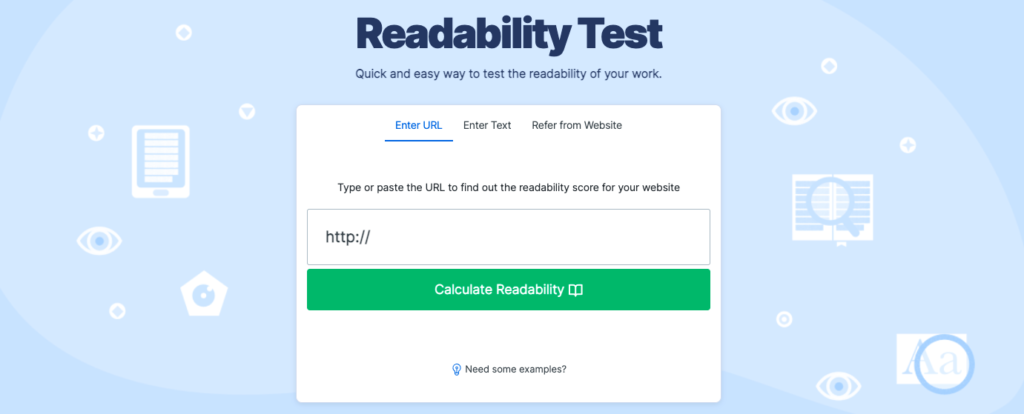
Internal and External Linking
Use internal and external links. Internal linking helps in indexing your article in the search results and keeps the readers engaged more on your website. External links to credible sources increase the trustworthiness of your content
Keep the Content Updated
Facts and numbers may change over time. So ensure your articles stay updated over time. It helps in keeping the article fresh and relevant and
Grammar
It goes without saying that your article should be grammatically correct. Poor grammar can be indicative of poor quality and lack of attention to detail. But mistakes are unavoidable. Let tools like Grammarly help in your writing when it comes to Grammar (if you are writing in English).
Proofread
Proofread at least three times. This will help you add any missing information and make some minor changes. Better yet, get your friends or colleagues to help with the proofreading and provide feedback. You are likely to miss details that a second set of eyes can find.
4. Images
Images are an important element in blog writing. You can use images in bringing more clarity to your statements. Use screenshots, photographs, graphics, etc. in your blogs. Images help in generating interest in your topic. It’ll also enhance the readability of your blogs. Let’s see how to use images in blogs and websites effectively.
1. Optimize images
Optimize all images before you upload them to websites and blogs. If you use images with heavy file sizes, it’ll take too much time to load and also affects your SERP rankings. Website usability can impact your rankings and page load speed plays an important part in that.
2. Use Alt tags
Alt tags or alt descriptions are HTML attributes that let you add an alternative text for the image. Add the text that explains what is in the image. Don’t use words like ‘image of’ or ‘screenshot of’. Use short sentences to describe what’s shown in the image. You can add your keywords in the alt description this will help in SEO.
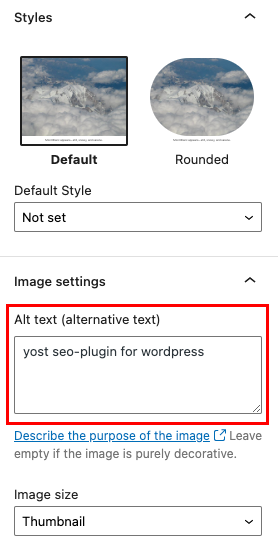
3. Give captions and descriptions
Captions and descriptions can help give more information to the image. You can add main keywords in captions too.
4. Featured image
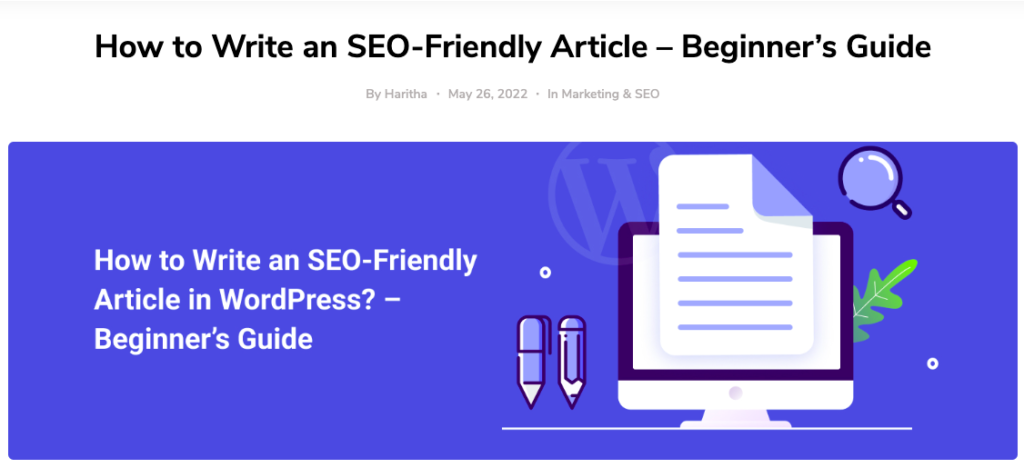
A featured image is a must for blogs and articles. Use featured images that are mobile-friendly too. A good featured image gets featured more easily, it also attracts more readers to your website.
5. Engage in social media
Images also get more engagement when shared on social media. Articles with images receive more engagement than plain text.
5. SEO
Now you’ve made quality content with relevant images and keywords. The next step is to make sure your content reaches the maximum number of people. To make it possible you need some SEO techniques too. SEO alone can’t expand your reach, that’s why we said you to focus on the other elements too.
SEO helps blogs in the following ways:
- Increase the organic traffic
- Establish credibility
- Improve domain authority over time
SEO can be divided into two – on-page SEO and off-page SEO.
On-page SEO – On-page SEO is when you optimize the content of your website on the webpage itself. Like the headings, keywords added to the content, improving the site speed, overall usability, etc.
Off-page SEO – refers to activities that help in improving the ranking of a website/webpage outside of the website. Like creating backlinks, social media, etc.
Below are some of the basic on-page SEO techniques that can help you rank better in the search results:
- Understand the search intent and format the article accordingly
- Use proper heading hierarchy
- Use internal links to and from the page you are trying to rank
- Add proper meta descriptions
- Optimize for featured snippets
- Add proper schema
- Keep the URL of the article short
- Add alt tags to images
Bonus: Following is an on-page SEO checklist that you can use for all your articles.
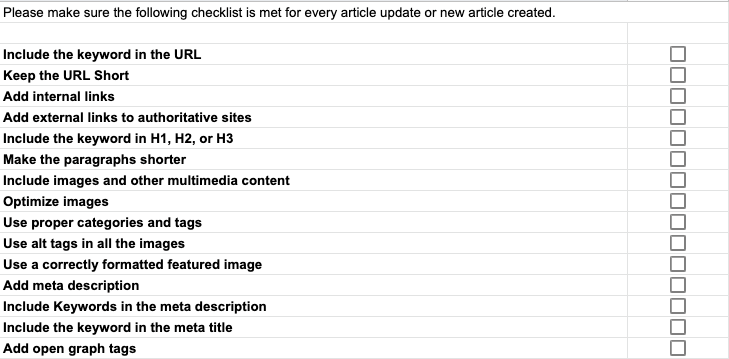
SEO for Your WordPress Website
If you are using WordPress for your website or blog we recommend installing the Yoast SEO plugin, which is a great tool for all SEO – related issues. The plugin monitors all the text and images you add to your webpage and gives you suggestions on how to improve it for SEO.
Installing Yoast SEO Plugin
- Open your WordPress dashboard.
- Go to Plugins > Add New.
- Search for Yoast SEO in the plugin directory.
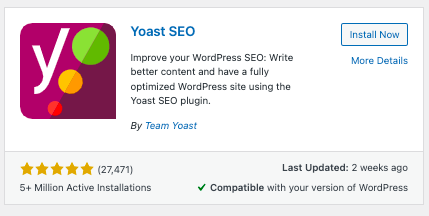
Install and Activate the plugin.
Keyword Analysis
Use a focus keyword. As mentioned previously you can obtain focus keywords during research and analyzing search intents. The focus keyword is the search term that you want a page or post to rank for most. Yoast SEO helps in analyzing the focus keywords in your article. Simply add a focus keyphrase in the Yoast post scrapper box.
Adding Metadata
Metadata is used to determine various elements of a webpage. Add an SEO Title, meta description, and slug.
SEO Title: Webpage title that displays in the Search Engine Results.
Slug: It is the unique identifying part of a web address at the end of the URL.
Meta Description: It is a short description of up to 160 characters that appears below the title and URL in search engine results.
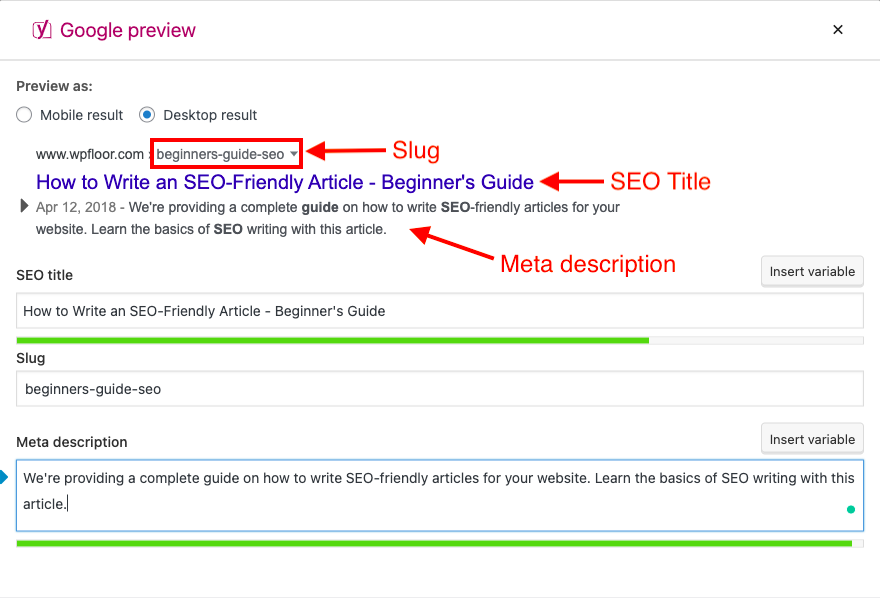
You can preview with mobile view and desktop view to check how the browser displays your meta description.
Readability
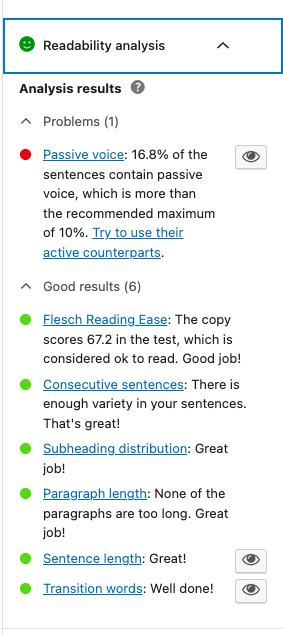
Yoast SEO will analyze the readability of your article using various parameters. It will give you a readability score and suggestions to improve the readability of your article. The good points will increase as you correct problems and improvements.
To Sum Up:
Writing for the web requires constant learning, you have to improve your knowledge and skills to stay on top. Hopefully, this detailed beginner’s guide will help you understand the basics of writing for the web.
If you liked this article, please share your feedback in the comments section.
Comments
Corene Simmens
Good day! I simply wish to give an enormous thumbs up for the nice data you will have right here on this post. I will be coming again to your blog for more soon.
June 19, 2019
Haritha
Thank you 🙂
June 20, 2019
Jeffry Cucco
You made some good points there. I did a search on the subject and found most individuals will approve with your website.
June 21, 2019
Isabelle Wiater
Appreciating the persistence you put into your site and detailed information you provide. It’s awesome to come across a blog every once in a while that isn’t the same outdated rehashed material. Excellent read! I’ve saved your site and I’m including your RSS feeds to my Google account.
June 23, 2019
Haritha
Hi Isabelle,
Glad to hear your feedback.
September 15, 2020